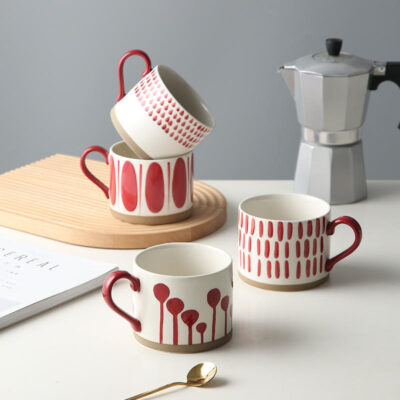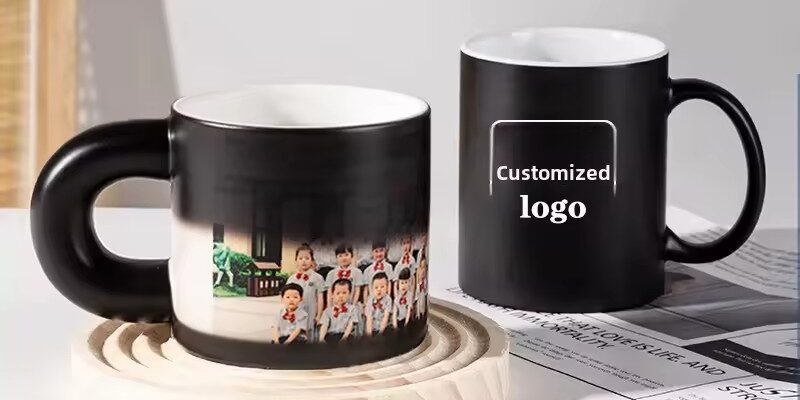For print-on-demand brands and corporate merchandisers, sublimation ceramic mugs remain a best-selling product line due to their vibrant color reproduction and long-lasting graphics. However, print quality depends largely on the coating formulation, surface smoothness, and testing standards used during production. In 2025, buyers need to go beyond price comparisons and understand the science behind mug coatings before placing bulk orders.
🎨 What Defines a Sublimation-Ready Mug?
A true sublimation mug isn’t just “white and glossy.” It’s a high-density ceramic base coated with a polymer layer designed to absorb sublimation ink at high temperatures (180–200°C). The coating layer must have uniform thickness and consistent absorption properties; otherwise, colors may appear faded or uneven.
Factories certified as Ceramic Sublimation Mugs Manufacturers typically maintain strict temperature control and use imported resins for reliable coating adhesion and durability.
⚙️ Coating Grades and Their Differences
There are three major coating types commonly used across the industry:
-
Economy Coating: Affordable but with limited wash resistance (around 100–150 dishwasher cycles). Suitable for promotional giveaways.
-
Standard Coating: Mid-tier finish balancing cost and performance, ideal for retail-level printing and short-run customization.
-
Premium or AAA Coating: High-gloss, UV-resistant formulation capable of 300+ dishwasher cycles and vivid color output.
Professional buyers often select the grade based on intended market positioning and final retail pricing strategy.
🧪 Testing Print Durability and Adhesion
Print durability determines whether your logo stays vibrant after repeated washing or fading under sunlight. Leading suppliers perform a set of key durability tests, including:
-
Dishwasher test (up to 300 cycles) using both alkaline and neutral detergents.
-
UV exposure test, simulating prolonged daylight conditions.
-
Thermal shock test, cycling mugs between hot and cold water to check coating elasticity.
By sourcing directly from reliable Ceramic Mug Manufacturers, importers can access batch-level test reports and even request third-party inspection to verify adhesion strength and print life.
🔥 Transfer Efficiency and Print Yield
The yield rate—percentage of mugs that print flawlessly—is a vital metric for both wholesale suppliers and end printers. A premium coating not only improves color transfer but also reduces waste. On lower-grade surfaces, the transfer paper may bubble or release unevenly, causing ghosting or dull finishes.
Advanced coatings are formulated to ensure ink polymerization occurs evenly during the heat-press cycle. This consistency saves printing time and reduces operational costs across thousands of units.
🧭 Choosing the Right Mug Size and Shape
Sublimation coatings behave differently on various shapes. Straight-walled mugs allow uniform pressure during heat pressing, while curved or tapered models may require silicone wraps or specialized presses. Buyers should always test the intended design before committing to bulk production.
Mug capacity (11oz, 15oz, 17oz) also affects production speed—smaller mugs heat faster and cool evenly, while larger mugs need longer dwell time to ensure complete ink transfer.
🌱 Environmental and Safety Considerations
In 2025, coating technology is evolving toward eco-friendly, VOC-free polymers that minimize emissions during curing. These coatings are compliant with both LFGB and FDA migration tests, ensuring food-contact safety. Buyers exporting to Europe or North America must confirm documentation at the quotation stage.
Eco-certifications are increasingly used in tenders and retail listings as proof of responsible sourcing. This makes choosing an audited manufacturer more than just a compliance requirement—it’s a marketing advantage.
💡 Tips for Professional Buyers
-
Request sample print tests before confirming mass production. Evaluate both color vibrancy and after-wash performance.
-
Check coating batch numbers—inconsistent batches can lead to subtle hue differences across shipments.
-
Ask for detailed curing data—properly baked coatings yield higher gloss and stronger adhesion.
-
Consider end-use environment—office, café, or outdoor use each require different coating durability profiles.
📦 From Sampling to Scale
Once coating standards and print yield are confirmed, importers should lock in production schedules early. Sublimation mug coating lines have limited capacity, and demand spikes during Q3–Q4 for promotional gifting and holiday packaging.
Aligning production slots with trusted partners ensures your supply chain runs smoothly, avoiding last-minute rush orders and quality compromises.
By understanding coating grades, testing parameters, and yield optimization, buyers can select the most reliable sublimation mugs for long-term business success. The market is moving quickly toward premium coatings, eco formulations, and documented testing—and those who source wisely will lead in print quality, customer satisfaction, and brand reputation.









